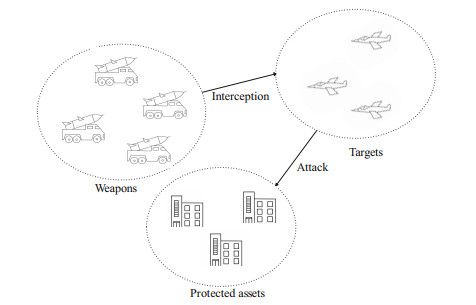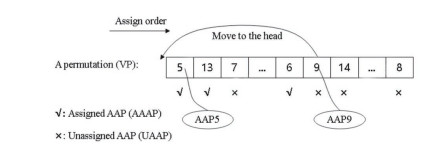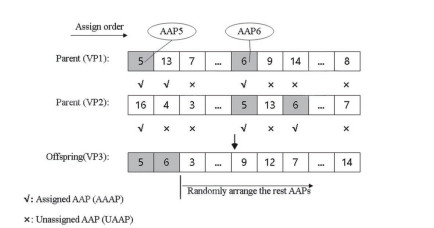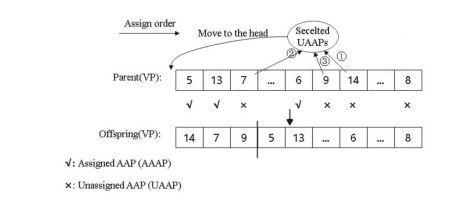1.
Introduction
In the literature, there are many works that are concern with the study of differential game problem in the Hilbert spaces such as Rn and ℓ2 (see, for example [5,6,7,8,9,10,11,12,13,14,15,16,17,18,19,20,21,22,23,24,25,26,27,28,29,30]). In particular, the space ℓ2, consists of elements of the form α=(α1,α2,…), such that ∑∞k=1α2k<∞. The inner product and norm are defined as follows:
where ,α,β,ϱ∈ℓ2.
The works cited above can be categorized into three groups. The first group are the woks [1,6,10,12,14,16,17,20,25,26,27,28,29] and [30] concern with finding conditions for completion of pursuit. Whereas, the works [13,16,17,23,27] and [28] are concern with evasion problems. Problems of finding the value of the game and construction of optimal strategies of the players are considered in [5,7,8,9,11,15,18,22] and [24]. The last category is of special interest in this research.
Among the last category, the problems considered in the papers [1,9,11,18,22] and [24] involve first order differential equations describing the motion of the players. On the other hand, problems involving second order differential equations are contained in [5,7] and [1]. The works [1] and [29] in the first category, are concern with problems in which dynamic equations of the players given as a combination of first and second order differential equations.
In another point of view, the references can be grouped into two. Those works with pursuer's and evader's dynamic equations are given as differential equations of the same order in one group. These works include [5,6,7,8,9,10,11,12,13,15,17,18] and [22,23,24,25,26,27,28,29,30]. The other group consists of the works [1] and [29] in which pursuer's and evader's dynamic equations are given as differential equations of different orders.
In [7], Ibragimov and Salimi investigated a differential game with infinitely many inertial players with integral constraints on the control functions of the players. Players' motion described by second order differential equations in the Hilbert space ℓ2. Duration of the game is fixed. Payoff functional is the infimum of the distance between the evader and the pursuers when the game is terminated. The pursuer's goal is to minimize the payoff, and the evader's goal is to maximize it. Under certain condition, the value of the game is found and the optimal strategies of players are constructed. Subsequently, this result was improved and reported in the paper [15].
Ibragimov and Kuchkarov in [8] examined pursuit-evasion differential game of countably many pursuers and one evader. Players move according to first order equations. Control of the pursuers and evader are subject to integral restrictions. The duration of the game is fixed and the payoff functional is the infimum of the distance between the evader and the pursuers when the game is terminated. The pursuer's goal is to minimize the payoff, and the evader's goal is to maximize it. Optimal strategies of the players are constructed, and value of the game is found.
Inertial Pursuit-evasion game with a finite or countable number of pursuers and evader in Hilbert space ℓ2 was studied by Ibragimov et al. in [13]. Dynamic of the players is described by second order differential equations in a Hilbert space. Control of the pursuers and evader are subject to integral restrictions. The period of the game is fixed. They formulated the value of the game and identified explicitly optimal strategies of the players. They assumed that there is no relation between the control resource of any pursuer and that of the evader.
Salimi, M. and Ferrara, M. in [24] studied differential game in which a finite or countable number of pursuers pursue a single evader. Game is described by an infinite system of differential equation of first order in Hilbert space. The control function of the players satisfy the integral constraints. The period of the game is pre-defined. The farness between the evader and the closest pursuer when the game is finished is the payoff function of the game. They introduce the value of the game and identify optimal strategies of the pursuers.
The game of boy and crocodile is studied by Siddiqova et. al. in [29]. The boy(evader) moves according to first order differential equation with its control subject to geometric constraint and is not allowed to leave a closed ball in Rn during the game. The pursuer(crocodile) moves according to second order differential equation with integral constraint on its control function. Sufficient conditions for completion of pursuit from all initial positions are obtained.
A game problem in which pursuers move according to first order differential equation and evader moves according to second order differential equation is studied in [1]. Control function of pursuers and evader are subject to integral and geometric constraints respectively. Theorems each of which provides sufficient conditions for completion of pursuit are stated and proved.
There are several other pursuit-evasion scenarios involving multiple pursuers and one evader studied in the literature, with dynamic equations not necessarily in the aforementioned groups. For instance; scenarios involving attackers, defenders and one evader are considered in [3,4], scenarios where the multiple pursuers and evader are constrained within a bounded domain are analyzed in [2,19,21,31,32].
In view of the literature presented above and the references therein, there is no study that belongs to the third category and deals with the problem in which dynamic equations of the players are given as combination of first and second order differential equations. That is, problem of finding values of the game and construction of optimal strategies of the players with players having dissimilar laws of motion. Therefore, the need to contribute to the literature in that direction.
In the present paper, we study pursuit-evasion differential game problem in a Hilbert space ℓ2, in which motion of the pursuers and evader described by first and second order differential equations respectively. Control functions of both the pursuers and evader are subject to integral constraints.
2.
Statement of the problem
In the space ℓ2, we define a ball with center at a and radius r by B(a,r)={x∈ℓ2:||x−a||≤r}, and a sphere with center at a and radius r by S(a,r)={x∈ℓ2:||x−a||=r}. Control function of the ith pursuer Pi, is the function ui(⋅)∈ℓ2, with Borel measurable coordinates uk:[0,θ]→R1. In a similar way, we define control function v(⋅) of the evader E.
Suppose that motion of the players is described by the equations:
where xi,xi0,ui,y,y0,y1,v∈ℓ2, ui=(ui1,ui2,…) and v=(v1,v2,…) are control functions of the ith pursuer Pi and evader E respectively. It is required that the control functions ui(⋅) and v(⋅) satisfy the inequalities
where ρi, i∈I={1,2,…} and σ are given positive numbers. The stoppage time of the game is fixed and is denoted by θ. In what follows in the paper, we shall refer to the control of the ith pursuer ui(⋅) satisfying the inequality (2.2) and that of the evader v(⋅) satisfying the inequality (2.3) as admissible control of the ith pursuer and admissible control of the evader respectively.
Definition 2.1. A function Ui(t,xi,y,v(t)), Ui:[0,∞)×ℓ2×ℓ2×ℓ2→ℓ2, such that the system
has a unique solution (xi(⋅), y(⋅)) with continuous components xi(⋅), y(⋅) in ℓ2, for an arbitrary admissible control v=v(t), 0≤t≤θ, of the evader E is called strategy of the pursuer Pi. A strategy Ui is said to be admissible if each control formed by this strategy is admissible.
Definition 2.2. Strategies ˉUi of the pursuers Pi are said to be best (optimal) if
where
and Ui are admissible strategies of the pursuers Pi and v(⋅) is an admissible control of the evader E.
Definition 2.3. A function V(t,xi,…,xm,…,y), V:[0,∞)×ℓ2×,…,×ℓ2×,…,×ℓ2→ℓ2, such that the system
has a unique solution (x1(⋅),…,xm(⋅),…,y(⋅)) with continuous components x1(⋅),x2(⋅),…,y(⋅) in ℓ2, for an arbitrary admissible control ui=ui(t), 0≤t≤θ, of the pursuers Pi, is called strategy of the evader E. A strategy V is said to be admissible if each control formed by this strategy is admissible.
Definition 2.4. Strategy ˉV of the evader E is said to be best (optimal) if
where
and ui(⋅) are admissible control of the pursuers Pi and V is an admissible strategy of the evader E.
In the paper [9], it is reported that the game has the value ϕ if
Research question: What is the game value for the game problem (2.1)- (2.3)?
If the pursuer Pi and evader E choose their admissible controls ui(t)=(ui1(t),ui2(t),…) and v(t)=(v1(t),v2(t),…) respectively, then by (2.1) their corresponding motion is given by
where
It is clear that x(⋅) and y(⋅) belongs to the space of continuous functions in the norm of ℓ2 for 0≤t≤θ, where the component xk(t) and yk(t) are absolutely continuous.
2.1. Attainability domains
Proposition 2.5. The attainability domain of
(a) the pursuers Pi from the initial state xi0 at time t0=0 is the ball HPi(xi0,ρi√θ).
(b) the evader E from the initial state y0 at time t0=0 is the ball HE(y0,σ(θ33)12).
Proof. For the proof of (a), using (2.11) we have
Let ˉx∈HPi(xi0,ρi√θ). If the pursuer Pi uses the control
Then we have
The prove of (b) is similar, for the evader's control v(t)=3(θ−t)θ3(ˉy−y0), 0≤t≤θ.
3.
Auxiliary differential game
In this section, we consider a game with a single pursuer and a single evader by dropping the index i in the game problem (2.1)-(2.3). In view of this, we have the solutions of the dynamic equations of the players (2.1) are given by
where y0=y0+θy1.
We define the set
The goal of the pursuer P is to ensure the equality x(θ)=y(θ) and that of evader E is the opposite. The problem is to construct a strategy for the pursuer that ensure the equality x(θ)=y(θ) for any admissible control of the evader.
Lemma 3.1. If y(θ)∈Ω then there exist a strategy of the pursuer P such that x(θ)=y(θ) in the game (2.1)-(2.3).
Proof. Let the pursuer's strategy be defined by
To show the admissibility of the strategy (3.3), we use the fact that y(θ)∈Ω, which means that
From this inequality we have
Therefore,
Using (3.3) and the inequality (3.4) we have
This shows that the strategy (3.3) of the pursuer is admissible.
We now show that the equality x(θ)=y(θ) is achievable, if the pursuer uses the strategy (3.3). Indeed,
The proof of lemma (3.1) is complete.
4.
Main result
In this section, we present the main result of the paper. Firstly, we present some important results that are useful in the presentation of the main result.
Lemma 4.1. (see [15], Lemma 9) If there exists a nonzero vector γ0 such that ⟨y0−xi0,γ0⟩≥0, for all i∈I, and H(y0,r)⊂⋃i∈IH(xi0,Ri) then H(y0,r)⊂⋃i∈I0Xi, where
Lemma 4.2. (see [9], Assertion 5) Let infi∈iRi=R0>0, If there exists a nonzero vector γ0 such that ⟨y0−xi0,γ0⟩≥0 for all i∈I and for any ε>0 the set ⋃i∈IH(xi0,Ri−ε) does not contain the ball H(y0,r), then there exist a point ˉy∈S(y0,r) such that ||ˉy−xi0||≥Ri for all i∈I.
We define a positive number ϕ by
Theorem 4.1. If there exists a nonzero vector γ0 such that ⟨y0−xi0,γ0⟩≥0, for all i∈I, then the number ϕ defined by (4.1) is the value of the game (2.1)-(2.3).
Proof. To prove this theorem, we first introduce dummy pursuers whose state variables are zi, i∈I and motion described by the equations
where the control function wi(t) is such that
The attainability domain of the dummy pursuer zi from the initial state xi0 is the ball
Let strategies of the dummy pursuers zi,i∈I be defined as follows:
For xi0≠y0, we set
where ϑ is the time such that
For xi0=y0, we set
Now, we define the strategy of the real pursuers by
In accordance with the payoff of the game, the number ϕ is the value of the game if the following inequalities hold
In view of this, we prove the inequalities in (4.5). Firstly, we show that left hand side inequality of (4.5). By definition of ϕ, we have
By lemma (4.1), we have
where
Consequently, the point y(θ)∈HE(y0,σ(θ33)1/2) belong to some half space Xj, j∈ˉI.
If xj0≠y0 and by the lemma (3.1) for strategy (4.2) of pursuers zj then we have the equality zj(θ)=y(θ) holding and
For the other case, if xj0=y0;ˉρj=ρj+ϕ√θ≥σ(θ33)1/2 and the dummy pursuer uses the strategy (4.3) then it is easy to show that zj(θ)=y(θ). This means that for each case, the equality zj(θ)=y(θ) is achieved.
Now suppose that the real pursuers uses the strategies (4.4), we show that ||y(θ)−xj(θ)||≤ϕ. Indeed,
This proves the left hand inequality in (4.5). Which means that the value ϕ is guaranteed for the pursuers.
Secondly, we prove the right hand inequality in (4.5). That is, we prove that the value ϕ is guaranteed for the evader. If ϕ=0, then the inequality follows for any admissible control of the evader. Suppose that ϕ≠0 and if ϵ be a non zero positive number such that ϵ<ϕ then by definition of ϕ the ball HE(y0,σ(θ3/3)1/2) is not contained in the set
Therefore, the existence of a point ˉy∈S(y0,σ(θ3/3)1/2), such that ||ˉy−xi0||≥ρi√θ+ϕ,i∈I, is guaranteed by the lemma (4.1). On another note, it is easy to show that
Consequently, we have
This means that if the evader can be at point ˉy at time θ, then the right hand side of (4.5) is proved. Indeed, evader's control exists that takes it to the point ˉy for the time θ, since the point is contained in the attainability domain of the evader. In particular, let the evader's control be defined by
Then we have
Therefore, the value ϕ is guaranteed for the evader. This proves the right hand inequality of (4.5). The proof of the theorem is complete.
5.
Example
Consider the game problem (2.1)-(2.3) and let ρi=1; σ=1√3; θ=9. We also assume the following initial positions of each of the ith pursuer and evader:
where the number √19 is the ith coordinate of the initial position of the ith pursuer. Observe that ρi√θ=3 and σ(θ33)1/2=9.
The goal is to show the value of the game (2.1)-(2.3) is given by ϕ=7. To show this, it is sufficient to show that
1. the following inclusion holds for any ϵ>0: HE(0,9)⊂⋃i∈IHPi(x0i,10+ϵ);
2. the ball HE(0,9) is not contained in the set ⋃i∈IHPi(x0i,10).
To show (1), we let y∗=(y∗1,y∗2,…)∈HE(0,9). Therefore, we must have ∑i∈I(y∗i)2≤81. Then the vector y∗ has a nonnegative coordinate or all the coordinates of the vector are negative.
We consider the first case in which the vector y∗ has a nonnegative coordinate y∗k. Then we have
This means that y∗∈HPk(x0k,10+ϵ). For the second case, since ∑i∈I(y∗i)2<∞, then limk→∞y∗k=0. Therefore, for the index k, we have
This also means that y∗∈HPk(x0k,10+ϵ).
To show (2), it is obvious that for any index i, that
This means that any vector y∗∈SE(0,9) with negatives coordinates does not belong to ⋃i∈IHPi(x0i,10). In view of the this and according to theorem 4.1, the game (2.1)-(2.3) has the value
6.
Conclusion
The pursuit-evasion differential game problem of countably many pursuers and one evader has been studied in the Hilbert space ℓ2. Control functions of the pursuers and the evader are subject to integral constraints. The value of the game is found and optimal strategies of the players are constructed. The problem considered in this work is uncommon in the literature but represent many real problems. It is a representation of pursuit problems involving objects with different dynamics and possibly information about the acceleration of one of the objects is not available. For further research, the evasion problem concerning the problem considered in this paper can be investigated.
Acknowledgments
The second author was financially supported by Rajamangala University of Technology Phra Nakhon (RMUTP) Research Scholarship. We also acknowledged the valuable comments, suggestions and observations of the reviewers of the draft article.
Conflict of interest
The authors declare that they have no competing interests in this paper.

















 DownLoad:
DownLoad: